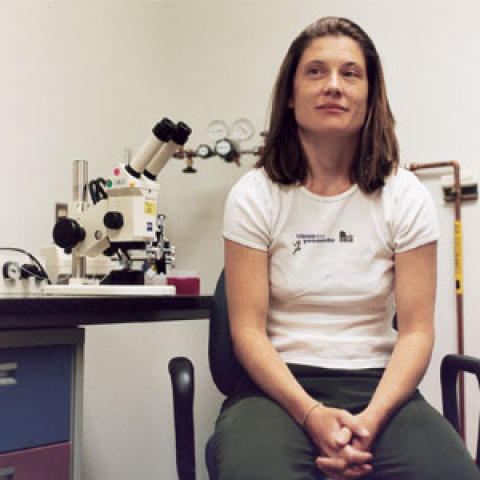Interdisciplinary Initiatives Program Round 4 – 2008
Julie Baker, Genetics
Gill Bejerano, Developmental Biology
Anna Penn, Pediatrics
The placenta is an intriguing organ from both an evolutionary and a health perspective. It is the key innovation that defines our lineage, yet defects in uterine invasion by the placenta appear to cause preeclampsia, a potentially catastrophic disease for both mother and fetus. World-wide more than 8 million women each year develop preeclampsia. Despite its important role for both mother and child, it is very poorly understood and there are few treatments beyond delivery of the infant. Sadly, our understanding of placental function may be compared to the knowledge of kidney function 50 years ago-- we can describe the anatomy but not the biology. Our overreaching goal in this grant is to use answers provided by genomic evolution to understand placental regulation in humans.
The placenta is comprised of a newly evolved cell type – the trophoblast. In eutherians, these trophoblast cells invade the uterine lining by secreting proteases and lead to the infiltration of endothelial cells that support the maternal fetal interface1. In marsupials, although they have trophoblast cells, these cells are incapable of invading the uterus2. Thus while marsupials have a true placenta, the connection between mother and offspring does not consist of direct nutrient transfer. This type of placenta is termed a yolk sac placenta and is more reminiscent of amniotes – like chickens – where the nutrients are supplied by a yolk reserve instead of direct contact with the mother 2,3. Therefore, the trophoblasts are fundamentally different in eutherians and marsupials and that difference is defined based upon the ability to invade the uterus. This difference may manifest molecularly at both the coding and non-coding components of the genome. In this grant, we have identified these regions and have found significant enrichment in transposable elements, suggesting a mechanism of evolution.
Since the failure of trophoblast invasion is thought to be one of the main causes of human placental dysfunction, a greater understanding of the genetics underlying normal trophoblast invasion will provide inroads toward designing early detection tools and better therapeutics for preeclampsia and other trophoblast associated diseases of pregnancy. During the course of this granting period, we have forged significant transdisciplinary networks to define diseases of pregnancy. These networks have led to two funded projects from the March of Dimes and from the Burroughs Welcome. More importantly, many collaborative efforts have emerged from our original efforts, including a comprehensive Placenta tissue bank, monthly placenta meetings and a placental team consisting of computational biologists, geneticists, developmental biologists, placental pathologists, neonatologists and ob/gyn physicians.



